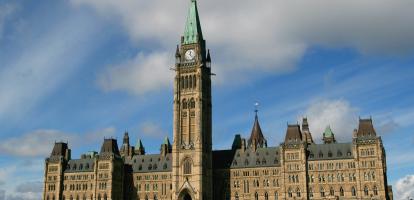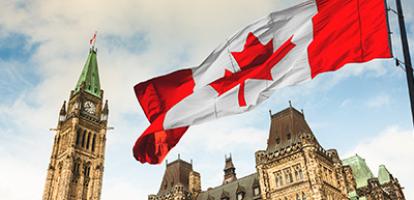Prices are rising and stock markets are falling — a toxic combination, especially for older Canadians who rely on savings in registered retirement saving plans (RRSPs) and defined-contribution pension plans, and who are drawing down savings in registered retirement income funds (RRIFs) and Life Income Funds (LIFs).
Many will now want to save more, to alleviate their risk of running out of money before they die. At the very least, Canadians over 71 should not face tax rules that force them to sell when the market is down, permanently lowering their prospects for retirement.
Instead of exacerbating their problems the federal government should help solve them.
To begin with, retirees need a break on mandatory RRIF withdrawals. The current schedule starts at 5.28 percent of the RRIF’s market value at the end of the year a taxpayer turns 71, and rises from there. This schedule has always been a problem and it has only become worse over time. People are living longer. Real yields on safe investments are negative. Too many seniors risk depleting their tax-deferred savings. Pre-downturn asset values will determine withdrawals for 2022, forcing outsize drawdowns at a terrible time.
The federal government responded to the 2008-09 crisis with a temporary cut in mandatory RRIF withdrawals. It responded to the COVID crisis by reducing them 25 per cent in 2020. Now would be a good time to abolish them entirely. If that’s too radical, a more modest step would be to reduce the withdrawals mandated for each age by one percentage point. That would give retirees relief now and leave them better off in the future.
Another good reform would be to raise the age at which Canadians must stop contributing to and start drawing down tax-deferred savings. Like the RRIF drawdowns, the current age of 71 has long been out of date: It discourages Canadians who want to work and/or save longer and increases the likelihood that retirees will exhaust their savings in these accounts.
For people close to 71 or past it, inflation and falling markets are a disaster. They may want to work and save longer. The government should let them. Immediately raising the age threshold for contributions and drawdowns to 75 would alleviate anxiety and get us to a better place long-term.
One more thing. Limits on tax-deferred saving in defined-contribution pension plans and RRSPs should be higher for all participants. The current limit of 18 per cent of earnings is the result of a calculation that presumes saving nine cents every year while working will produce a dollar of pension income. Since the government limits pension accruals in defined-benefit pension plans to two dollars per year of service, it limits contributions to defined-contribution plans and RRSPs to 18 per cent. But increases in life expectancy and lower yields on safe investments have increased the saving needed to produce a dollar of retirement income to at least 15 cents per year. The limit on contributions to these plans should be, not 18 per cent, but 30 per cent of income.
Tax-deferred saving for retirement is not a perk for the rich. Most adult Canadians have savings in RRSP and or defined-contribution pension plans, RRIFs and LIFs. The real perks in retirement income are the defined-benefit pension plans enjoyed by members of Parliament and other federal employees. Participants in those plans get much more tax-deferred saving room than other Canadians, and age thresholds and mandatory drawdowns are not an issue for them. Backing by taxpayers and indexation protects them from market crashes and inflation. Making these measures less restrictive is about helping the millions of older Canadians who don’t have such lavish guarantees.
In this environment of macroeconomic excess, a final argument for the reforms we propose is that they would encourage saving and investment, not the consumption that is helping fuel inflation. The taxes deferred in RRIFs, RRSPs and pension plans are just that: deferred. Money the government does not collect in 2022 will be due in future years. Deferring revenues in this way will create less fiscal stress for the government than having to bail out distressed seniors.
Falling markets and rising prices are squeezing many Canadian retirees. Forced drawdowns and federal restrictions on saving and are part of the problem. Reforming them is part of the solution.
Alexandre Laurin is Director of Research at the C.D. Howe Institute, where William Robson is CEO.
Published in the Financial Post





